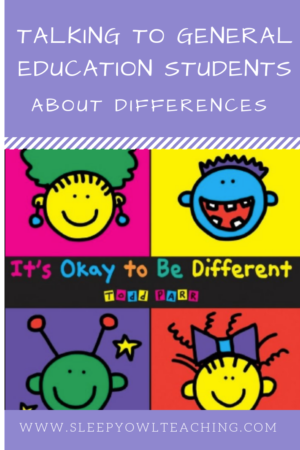Hello all,
Now that we are officially a few weeks into the school year we’ve begun talking to students in our inclusion classes about differences. It sometimes seems pretty obvious when some of our students walk into their general education classrooms that they may have some differences from their peers. Some of these differences are visible and some are not. A great way to start off the new school year is with a conversation about acceptance and differences among everyone.
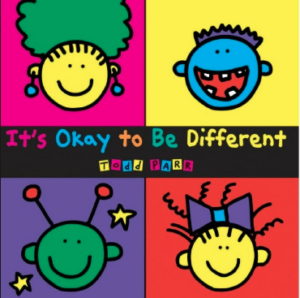
We are lucky to have a group of teachers who developed an Understanding Differences curriculum for our district. Lots of our general education teachers use it to talk to their classes about differences among everyone. Even those teachers who don’t have special education students in their classes use it. It’s a great way to talk about everyone’s differences and what makes everyone special. Each class is unique and is made up of all kinds of learners. Some need glasses. Others need “concentration tools” (our term for fidget tools). Still others go to see other teachers for different learning needs. By talking to these classes as a whole we can have great conversations with our students about each individual student needing something different to be successful.
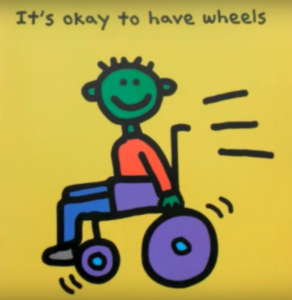
This year I was invited into one of our first-grade classrooms to talk about differences. This is a classroom that some of the students on my caseload push into for inclusion but it’s also a classroom that has LOTS of different learners this year. I brought with me the book It’s Okay to be Different by Todd Parr. You can find it here on Amazon:
This book is super bright, colorful, and simple but delivers a powerful message. The author does a great job combining silly topics with deeper topics.
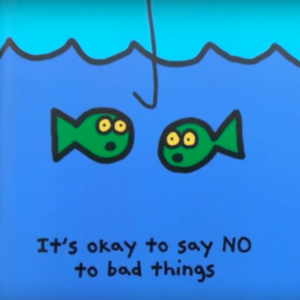
I started the read-aloud by asking the students to raise their hand if they knew anyone with different features and learning styles. For example, “Raise your hand if you know anyone with glasses. Raise your hand if you know anyone who is bald. Raise your hand if you know anyone who likes to be wiggly when they learn. Raise your hand if you know anybody who is missing a tooth right now.” The kids loved this activity and lots of giggles came out when we got to missing teeth and no hair. I learned that more than one student has a father who is bald. ![]()
After the class settled back down, we dove into the book. I’ll highlight a few of my favorite pages here but the whole book is great. The author does a great job of broaching tough subjects while still incorporating humor. A great example of this is the series of pages that say “It’s okay to talk about your feelings” “It’s okay to eat macaroni and cheese in the bathtub” “It’s okay to say NO to bad things.” He also talks about things such as “It’s okay to have wheels.” and “It’s okay to need help” while also reminding students that “It’s okay to do something nice for someone” and “It’s okay to do something nice for yourself.” This is the self-care reminder we all need!
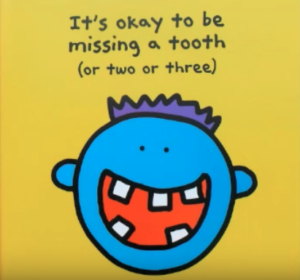
To see more things that it’s okay to do and be, check out the book. I think it was a great way to include each student in the classroom in the idea of accepting everyone how they are and also understanding that they, themselves, are unique and special and it’s okay to be who they are. The class seemed to wrap their heads around this while also having a fun time making connections.
I’d highly recommend this book to any special educator or general educator who is talking to students about differences and how we are all unique and special.
It’s okay to be you!
![]()
*Some of the links in this post are affiliate links. This means if you click on the link and purchase the item, I will receive an affiliate commission at no extra cost to you. All opinions remain my own, and I only link to products I use and recommend.

